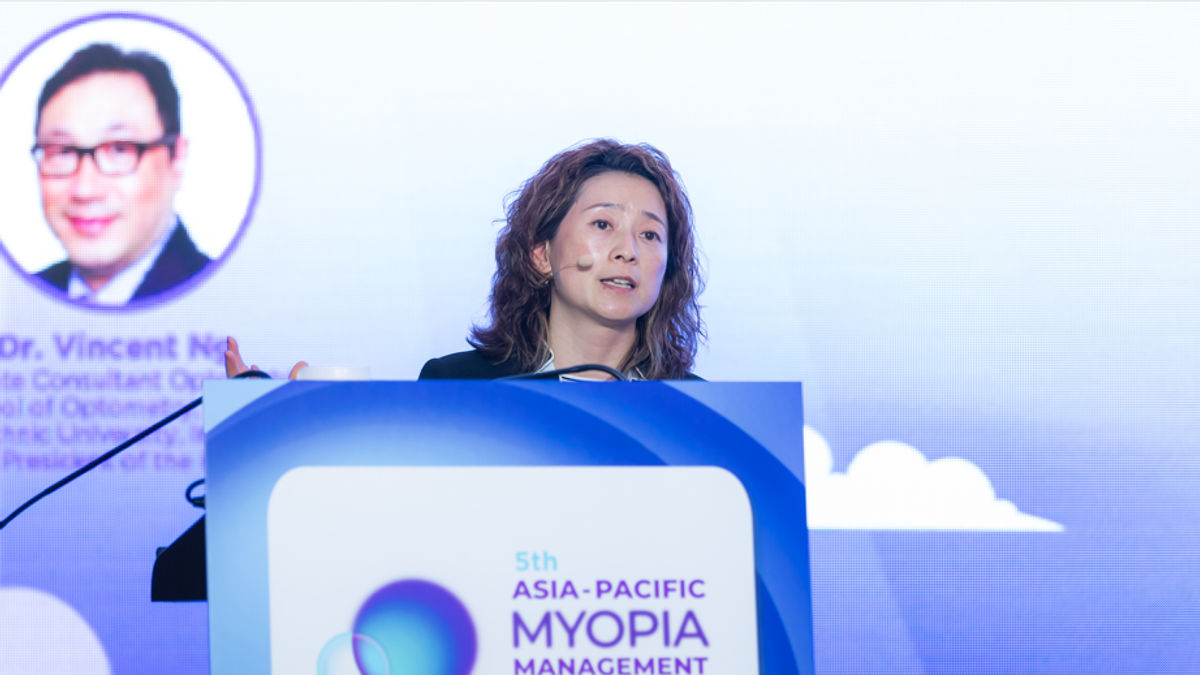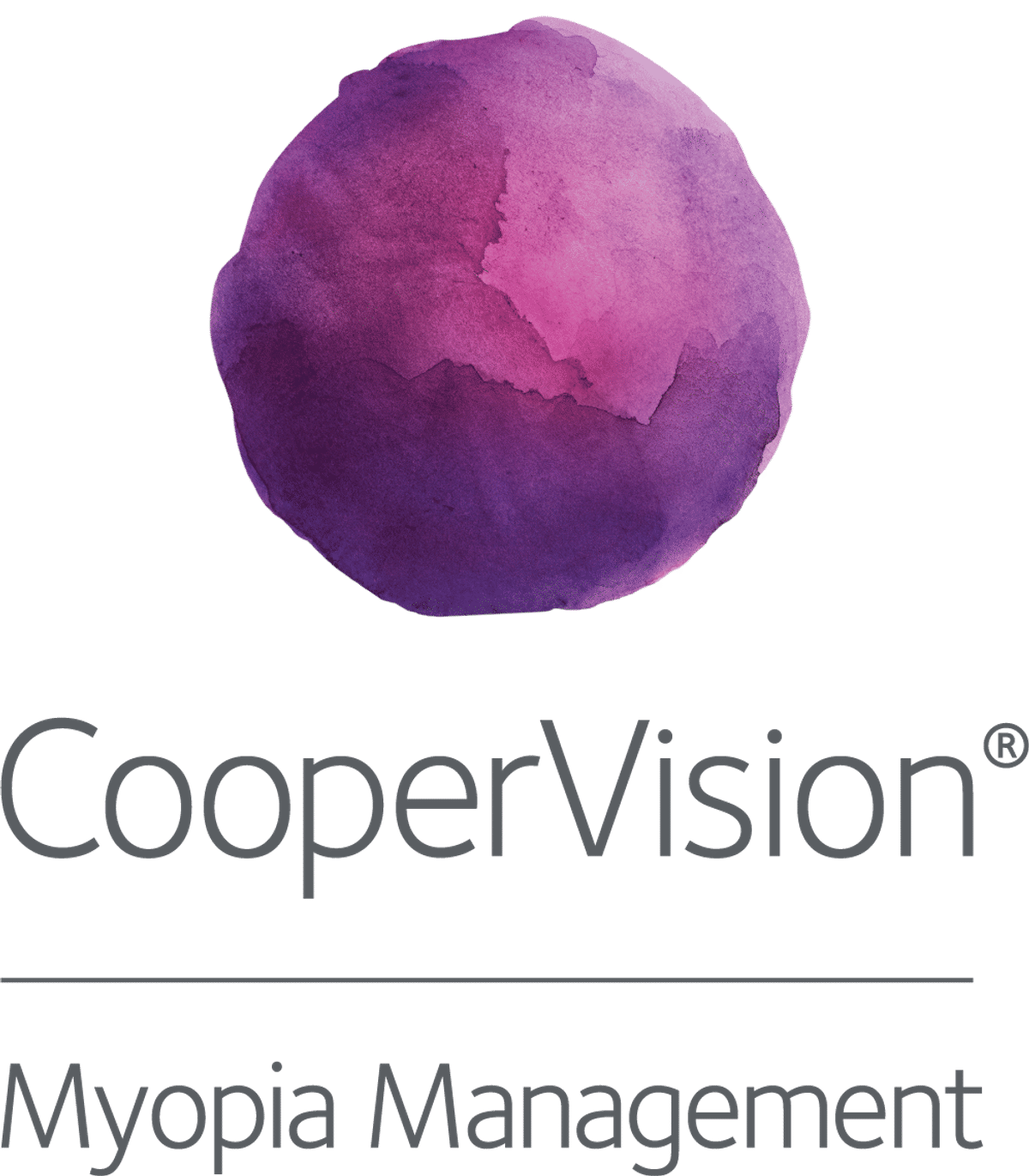Clinical
5-year clinical insights on MiSight® 1 day - learnings from APMMS 2025

Sponsored by
In this article:
As part of Myopia Profile’s coverage of APMMS 2025, Dr Maria Liu shares five-year MiSight® 1 day data, patient selection insights, and practical approaches to combination therapy in myopia control.
- What have been the most surprising findings in your 5-year MiSight® 1 day data?
- What patient profiles tend to do best with MiSight® 1 day in your clinic?
- You mention lens centration relative to the visual axis — how do you evaluate and optimise that in practice?
- How do you handle cases where patients have significant astigmatism or borderline fit for MiSight® 1 day?
- What are the specific indications or patient profiles that lead you to initiate low-dose atropine, either as a monotherapy or in combination with MiSight® 1 day?
- When combining low-dose atropine with MiSight® 1 day, what concentration(s) do you prefer and what patient considerations are important?
The highly anticipated Asia-Pacific Myopia Management Symposium (APMMS) 2025 was held in Hong Kong on the 1st of June 2025. Championed by CooperVision, this APAC flagship event brought together thought leaders, researchers, and clinicians to explore the latest advancements in myopia control—including cutting-edge science, clinical insights, and emerging treatment strategies.
As part of Myopia Profile’s ongoing coverage of the event, we sat down with Dr. Maria Liu (pictured above), Professor of Clinical Optometry at UC Berkeley and founder of the UC Berkeley Myopia Control Clinic, to discuss her team’s compelling five-year data on MiSight® 1 day, patient selection strategies, and how combination therapies are being used in practice.
What have been the most surprising findings in your 5-year MiSight® 1 day data?
One of the most surprising and encouraging findings from our 5-year MiSight® 1 day data has been the sustained efficacy of the treatment, showing non-inferiority to the original MiSight® 1 day premarket clinical trial, even when applied in a real-world setting. This consistency supports the robustness and generalizability of the original trial results across diverse practice environments and patient populations.
What stood out even more, however, was the observation that approximately 20% of patients experienced not just slowed progression but a small yet clinically meaningful reversal of myopia during their first year of MiSight® 1 day treatment. Specifically, we documented an average reduction of 0.50 diopters in spherical equivalent refraction and a 0.05 mm decrease in axial length in this subset. While the mechanisms are not yet fully understood, this unexpected response raises intriguing possibilities about the interplay between optical signaling, retinal feedback, and emmetropization in certain patients.
These findings underscore the importance of early intervention and individualized response tracking, and they open the door to further investigation into predictive factors for exceptional responders. Overall, our data not only reinforce MiSight® 1 day's long-term efficacy but also highlight a subgroup of children who may benefit even more profoundly than previously anticipated.
What patient profiles tend to do best with MiSight® 1 day in your clinic?
In our clinic, the patients who do best with MiSight® 1 day typically share several key characteristics—beginning with early intervention. Children who start treatment shortly after the onset of myopia, usually around ages 7 to 9, tend to respond most favorably. Early treatment helps intercept rapid progression and preserves better long-term visual outcomes.
Equally important is the child’s sense of responsibility and independence. Because MiSight® 1 day requires consistent daily lens wear and proper handling, children who can reliably manage application, removal, and hygiene with minimal supervision are far more successful.
That said, parental involvement remains critical—especially in supervising lens care, reinforcing healthy habits, and ensuring follow-through with regular wear and follow-up visits. Families who actively participate in the process—by encouraging frequent outdoor breaks, limiting excessive screen time, and prioritizing routine appointments—greatly enhance the overall effectiveness and safety of MiSight® 1 day treatment.
In short, ideal candidates are young, motivated, and mature children, supported by engaged and proactive parents. When these factors align, we consistently observe excellent compliance, slower axial growth, and long-term myopia control success with MiSight® 1 day.
You mention lens centration relative to the visual axis — how do you evaluate and optimise that in practice?
In our clinic, evaluating lens centration relative to the visual axis is a critical component of ensuring both the efficacy and visual comfort of MiSight® 1 day lenses. One of the key tools we use is dynamic pupillometry, which helps us understand how the pupil shifts under various lighting conditions. Since lens optics are fixed but pupil size and position change, especially in children, this assessment gives insight into how well the treatment zones align with the functional pupil area during daily activities. Poor centration can lead to compromised vision or suboptimal treatment effect.
We also perform corneal topography over the MiSight® 1 day lens, which provides a valuable map of the optical zone’s alignment relative to the corneal apex and the pupil. This allows us to detect if the lens consistently decentrates in one direction and whether the treatment zones are effectively overlapping the visual axis.
Additionally, we are careful not to over-minus the MiSight® 1 day prescription. Overcorrection not only increases the risk of accommodative strain but can also worsen the relative contrast between the distance and treatment zones, reducing comfort and potentially undermining the myopia control effect. A balance between proper centration, optical alignment, and accurate prescription is key to long-term success.
How do you handle cases where patients have significant astigmatism or borderline fit for MiSight® 1 day?
In our clinic, we’ve found that significant astigmatism or borderline fit cases with MiSight® 1 day can often be managed successfully with careful evaluation and patient-specific considerations. Importantly, residual astigmatism does not always translate to poor visual performance. Its actual impact depends on several factors, including pupil size, magnitude and direction of lens decentration, the axis and magnitude of under-corrected astigmatism, and the patient’s own capacity for blur adaptation. Many of our patients with moderate astigmatism achieve excellent visual clarity and comfort with MiSight® 1 day lenses. Moreover, we have not observed that residual astigmatism compromises the myopia control efficacy, which is reassuring in clinical decision-making.
When it comes to borderline fits, we closely monitor lens movement and centration, both during the initial fitting and at follow-ups. In rare instances where the fit is truly inadequate—due to excessive decentration or movement that interferes with vision or comfort—we may switch the patient to an off-label multifocal soft contact lens that offers more customization in base curve or diameter. This is always done with informed consent and under careful supervision.
Ultimately, our approach is individualized, balancing visual quality, fit stability, and treatment efficacy, while also considering each patient’s adaptability and visual needs.
What are the specific indications or patient profiles that lead you to initiate low-dose atropine, either as a monotherapy or in combination with MiSight® 1 day?
In our clinic, low-dose atropine (LDA) is generally considered a second-line option rather than a first-line therapy. This decision is rooted in the fact that its mechanism of action remains poorly understood, particularly regarding its likely posterior sites of action such as the retina, RPE, or sclera. Because atropine is administered topically, productive absorption to the posterior segment can be highly variable, especially in pediatric patients with long axial lengths or ocular surface conditions. As a result, we typically reserve LDA for specific clinical scenarios.
LDA monotherapy is most commonly initiated in younger children (under 6) or those who lack the motivation or maturity for daily soft contact lens wear. In these cases, where optical interventions like MiSight® 1 day are not yet feasible, LDA offers a convenient, parent-administered alternative to begin myopia control early.
In patients already wearing MiSight® 1 day lenses, we may consider adding LDA as an adjunct therapy if myopia progression is faster than expected despite good compliance. However, we advise families that the additive effect is inconsistent and should not be assumed to produce a linear benefit. Each case is managed individually, weighing potential gains against risks and the child’s ability to tolerate the combined treatment approach.
When combining low-dose atropine with MiSight® 1 day, what concentration(s) do you prefer and what patient considerations are important?
When combining low-dose atropine (LDA) with MiSight® 1 day, our clinical approach prioritizes both visual quality and tolerability, given the complexity of layering two myopia control modalities. Although LDA monotherapy has demonstrated a dose-dependent response, the specific efficacy of different concentrations in combination therapy has not been firmly established. Therefore, we tend to take a conservative, patient-centered approach.
In most cases, we initiate combination therapy with lower concentrations of atropine, typically between 0.01% and 0.025%, especially for patients who are new to pharmacologic intervention or already experiencing some degree of visual compromise from optical blur zones. This range helps reduce the likelihood of side effects such as ghosting, halos, glare, and light sensitivity, which can impact daily comfort and compliance.
An often-overlooked but important consideration is that contact lens wear can increase corneal epithelial permeability, potentially enhancing intraocular absorption of atropine. This means that even lower concentrations may produce a stronger pharmacologic effect than expected in contact lens users. Therefore, we monitor patients closely for both therapeutic response and tolerability, adjusting concentration only as needed.
Overall, our goal is to maintain the delicate balance between efficacy and patient experience, ensuring both treatments complement each other without compromising visual performance or comfort.
Meet the Authors:
About Dr Maria Liu
Dr. Maria Liu is a Professor of Clinical Optometry and the Pamela P. Fong Faculty Chair in Optometry & Health Care at the University of California, Berkeley. She is the founder of the UC Berkeley Myopia Control Clinic—the first dedicated myopia clinic within an optometric teaching institution—which now serves as a model for programs across the country. A globally recognized leader in myopia research, Dr. Liu’s work focuses on novel contact lens designs, pharmaceutical interventions, and the impact of complex visual environments on myopia development. Originally trained as an ophthalmologist in Beijing, she later earned her OD from Pacific University, along with an MPH and PhD from UC Berkeley.
This content is brought to you thanks to an educational grant from
Enormous thanks to our visionary sponsors
Myopia Profile’s growth into a world leading platform has been made possible through the support of our visionary sponsors, who share our mission to improve children’s vision care worldwide. Click on their logos to learn about how these companies are innovating and developing resources with us to support you in managing your patients with myopia.












